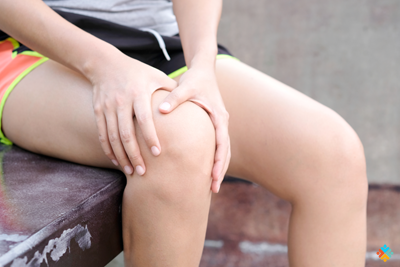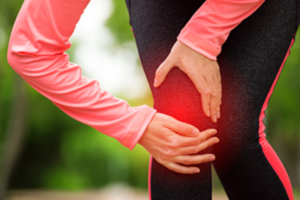Patellar Tendinopathy: Not All Tendons are Created Equal
Have you ever experienced anterior knee pain? The likely answer is yes, and it can be quite debilitating! There are a variety of causes for anterior knee pain including patellar tendinopathy (tendonitis), chondromalacia patella, patellar tracking issues , and more serious injuries like ACL tears. This blog with focus on patellar tendinopathy.
What is Patellar Tendinopathy
So, you may be wondering how this condition starts in the first place. It is usually the result of overloading the tendon before it has time to adapt. By not allowing for a gradual increase in training load, the tendon faces more stress than it is capable of tolerating. G enerally it affects the adult population ranging from 16-40 year olds, but can affect anyone if a training schedule is not properly developed. Once the condition has developed, it can take anywhere from 2 weeks to 2 months to fully resolve.
Biological signs of the injury include up regulation of cells that create the tendon, ground substance, nerves, and blood vessels. One hypothesis for why the tendon becomes painful is the in-growth of nerves and blood vessels; picture packing all of these substances into a compact area. T he brain and central nervous system may also play a big role in sensitization of the tissue. Pain with this condition like serves more as a “danger signal” to allow the human to know something is happening in that area of the body, and is likely not a signal of tissue damage. Think of this as a warning sign to slow down and let the tendon adapt.
Diagnosis of Patellar Tendinopathy
Functional movements that usually become painful with patellar tendinopathy:
- Going down stairs hurts more than going up
 The deeper the squat, the more the pain
The deeper the squat, the more the pain- Sitting for long periods
- Running, jumping, and walking hills hurts
Other hallmark signs of the condition:
- Pain in the front of the knee just below the kneecap
- Pain “came out of nowhere and progressively got worse”
- Recent change in training load
- No catching, locking, or giving-way
Real Life How it Happens
Now that we’ve gone through all the logistics of this condition, lets look at a real life example of how this can happen with running. Picture this: It’s winter, the weather isn’t great for running so you’ve been inside running on a treadmill. You have been consistently running 5 miles with no pain throughout 4x’s a week.
Then BOOM. March hits and its 60 degrees out with the sun shining. New shoes are unboxed and you can’t wait to get outside and hit the pavement. You start running outside with the same mileage, but now you’re running 5-6x’s for 6-7 miles a week because you can’t resist how nice its been outside. One morning you wake up to walk to work or class and you notice that as you’re walking down hill your knee is bothering you a little (nothing serious 1/10 pain). Over the next few days you notice the pain is getting a little worse (2-3/10 pain with stairs, hills, and now its even bothering you a little with running). Now you’re concerned because its starting to affect running.
So let’s break that story down and see how training may have overloaded the tendon before it was able to adapt:
- The obvious, moving from 4x’s a week to 5-6x’s a week and increasing mileage
- Moving from a treadmill which absorbs some shock to pavement
- Flat to hilly terrain
- Even to slightly tilted or cracked sidewalks
- Going from a consistent speed or cadence to one that is likely more varied
- Change in temperature
Wrap-Up
As you can see, outside of the obvious, there are a lot of other variables that need to be accounted for to allow the tendon to adapt properly. No matter the activity, it is important to allow adaptation to training volume, load, surface, or equipment. The importance of ramping-up training or allowing appropriate time for tissue adaptation can not be overstated. This is why this injury is usually more prevalent at the beginning of a sporting season or training regimen.
Treatment
As always, better outcomes are seen with more timely interventions versus the wait and see method. Treatment is generally aimed at reducing pain, promoting tissue adaptation and healing, and improving proprioception in the joint and surrounding tissues. Eccentric and heavy slow resistance exercises have been shown to be the most beneficial in treating this condition and some protocols have been established. Since everyone’s tendon quality and pain levels may be different, it’s essential to ensure you are starting at the right level for your level of tissue irritability. If the tendon is stressed too much during recovery, the tendinopathy cycle may repeat itself and may become worse.
Remember, there is no established time frame for recovery, so being patient with recovery is important. The good news is that you can usually continue training during rehab, but it is best to consult your physical therapist about adjusting impact training, training load, or training volume.
Bryan Esherick PT, DPT









